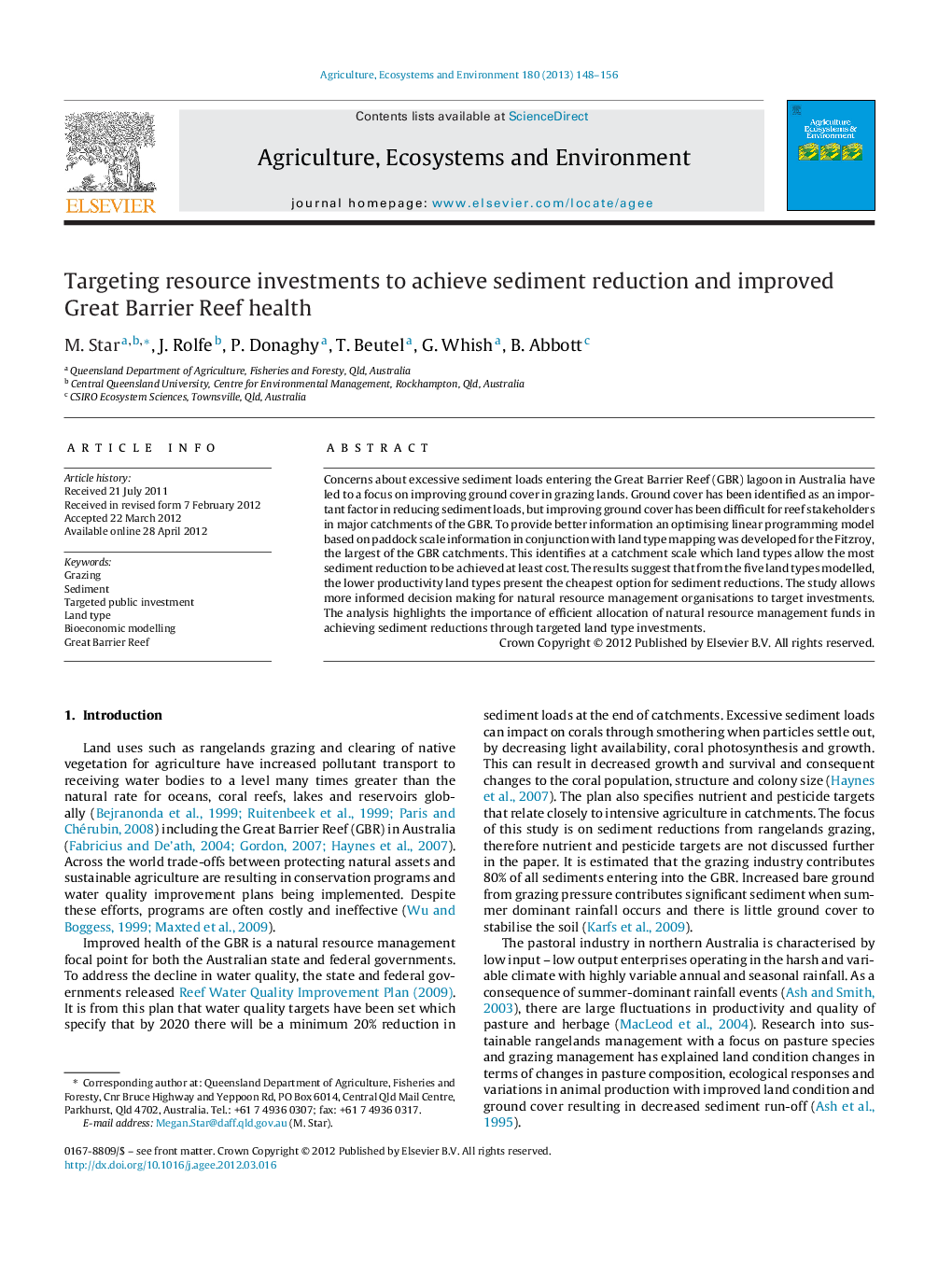| Article ID | Journal | Published Year | Pages | File Type |
|---|---|---|---|---|
| 2414103 | Agriculture, Ecosystems & Environment | 2013 | 9 Pages |
▶ Ground cover has proved difficult for reef stakeholders in the Great Barrier Reef. ▶ To inform the allocation of funds a linear programming model was developed. ▶ This identifies which land types allow the most efficient sediment reductions. ▶ The study allows more informed, cost efficient targeting of NRM funds.
Concerns about excessive sediment loads entering the Great Barrier Reef (GBR) lagoon in Australia have led to a focus on improving ground cover in grazing lands. Ground cover has been identified as an important factor in reducing sediment loads, but improving ground cover has been difficult for reef stakeholders in major catchments of the GBR. To provide better information an optimising linear programming model based on paddock scale information in conjunction with land type mapping was developed for the Fitzroy, the largest of the GBR catchments. This identifies at a catchment scale which land types allow the most sediment reduction to be achieved at least cost. The results suggest that from the five land types modelled, the lower productivity land types present the cheapest option for sediment reductions. The study allows more informed decision making for natural resource management organisations to target investments. The analysis highlights the importance of efficient allocation of natural resource management funds in achieving sediment reductions through targeted land type investments.
